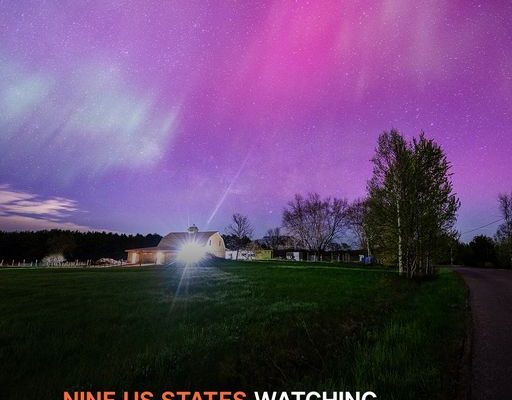In addition to releasing information about where and when people can watch the Northern Lights, the Space Weather Prediction Center has provided useful tips and tricks for viewing.
According to “viewlines” shared by the Space Weather Prediction Center (SWPC), tonight and tomorrow night, on November 8 and 9, people in North America will have the opportunity to watch the Northern Lights.
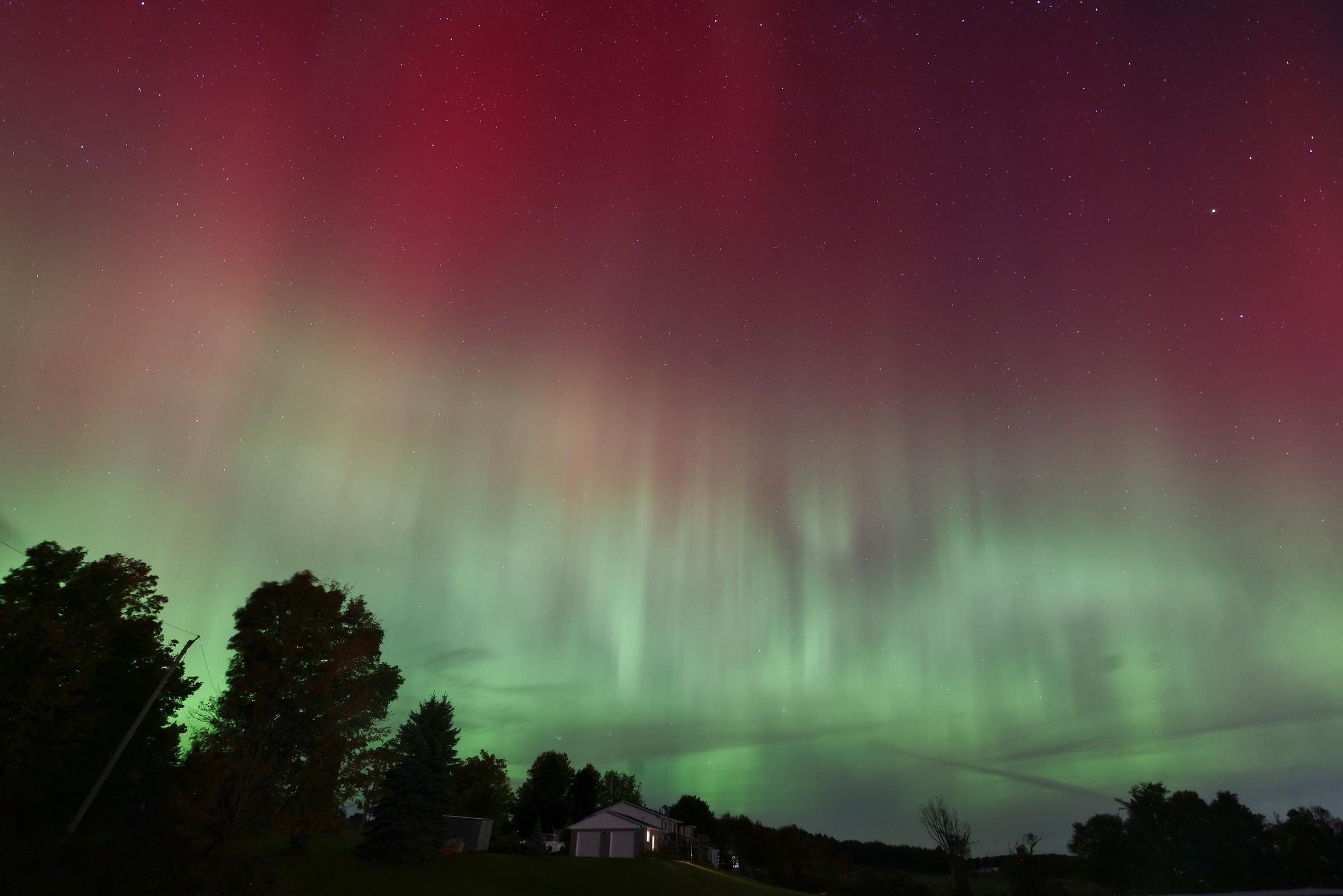
The Aurora borealis, or the northern lights, illuminates the night sky in Shelburne, Toronto, Canada on October 11, 2024 | Source: Getty Images
Specific states likely to witness the aurora on the northern horizon include Alaska, Washington, Idaho, Montana, North Dakota, and Minnesota.
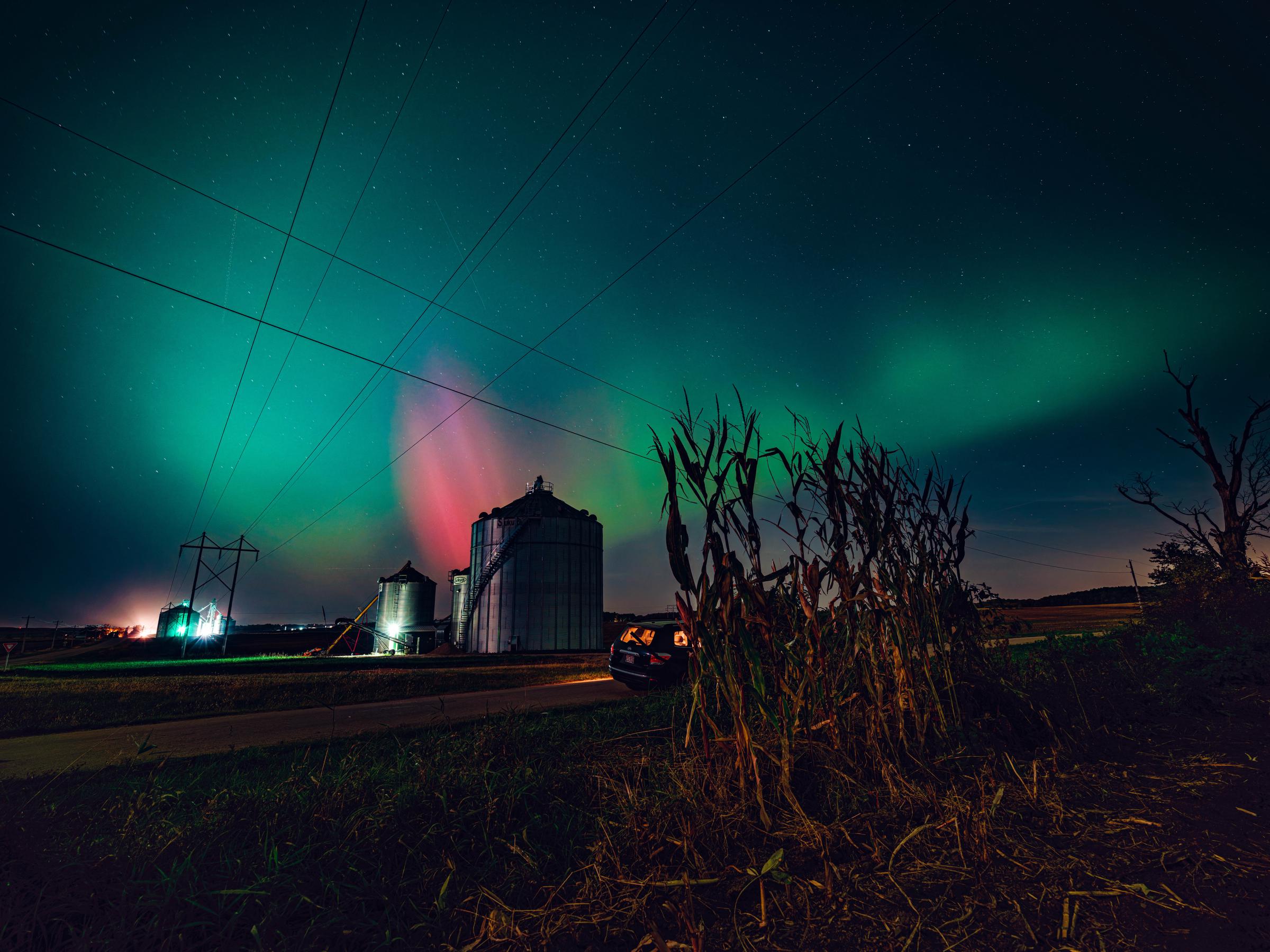
The Northern Lights in Wisconsin in 2024. | Source: Getty Images
Additional locations include Wisconsin, Michigan (more prominent in the Upper Peninsula), and Maine, especially in the state’s most northern region.
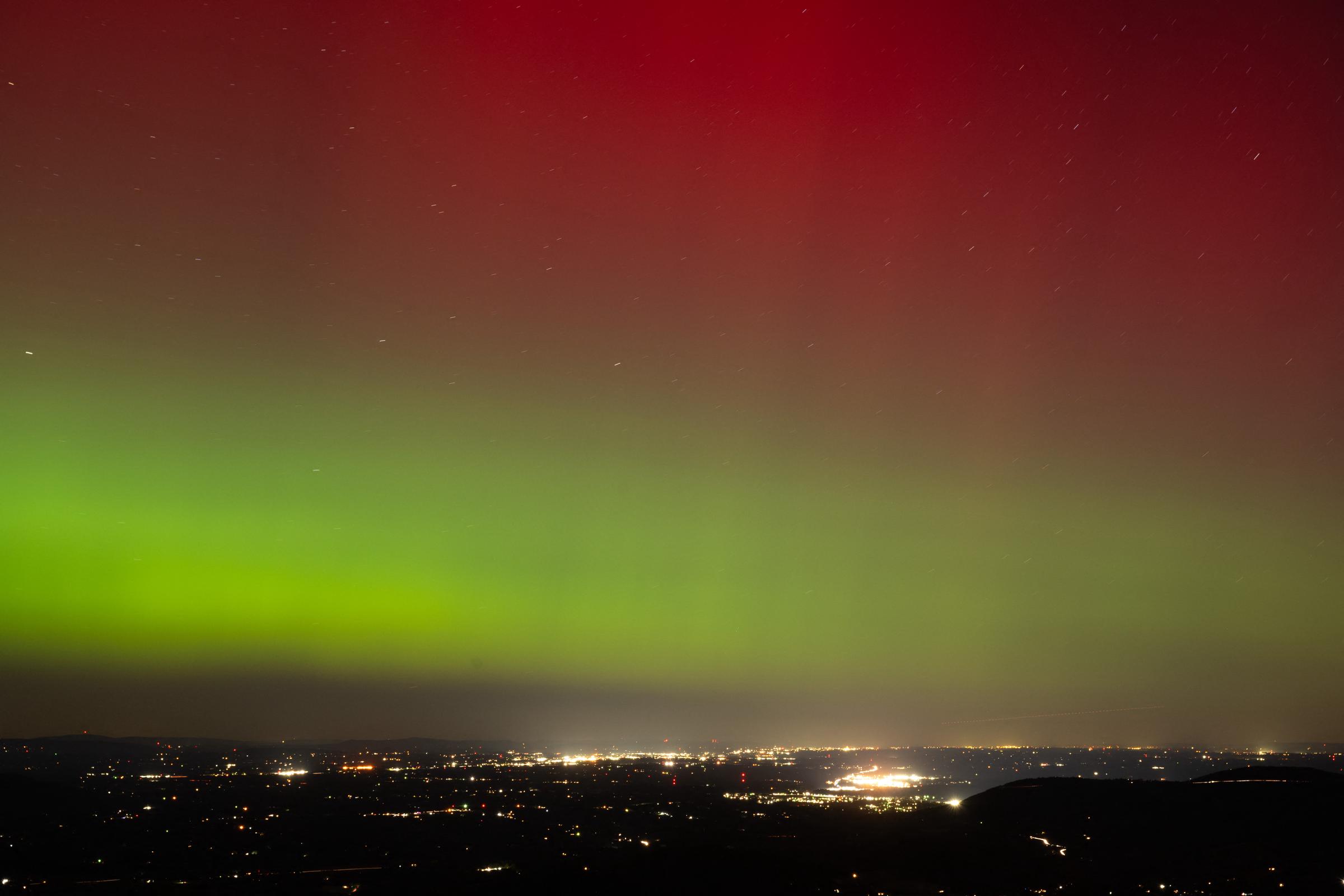
The Northern Lights in Rileyville, Virginia on October 10, 2024 | Source: Getty Images
The SWPC’s forecast, which is subject to change, uses green and red colors to indicate the location, brightness, and intensity of the aurora, with green symbolizing the first two, and red the latter.
According to their prediction, which is based on the OVATION model, auroras are typically observed from Earth either just before sunrise or just after sunset, as the spectacle is not visible during daylight hours.
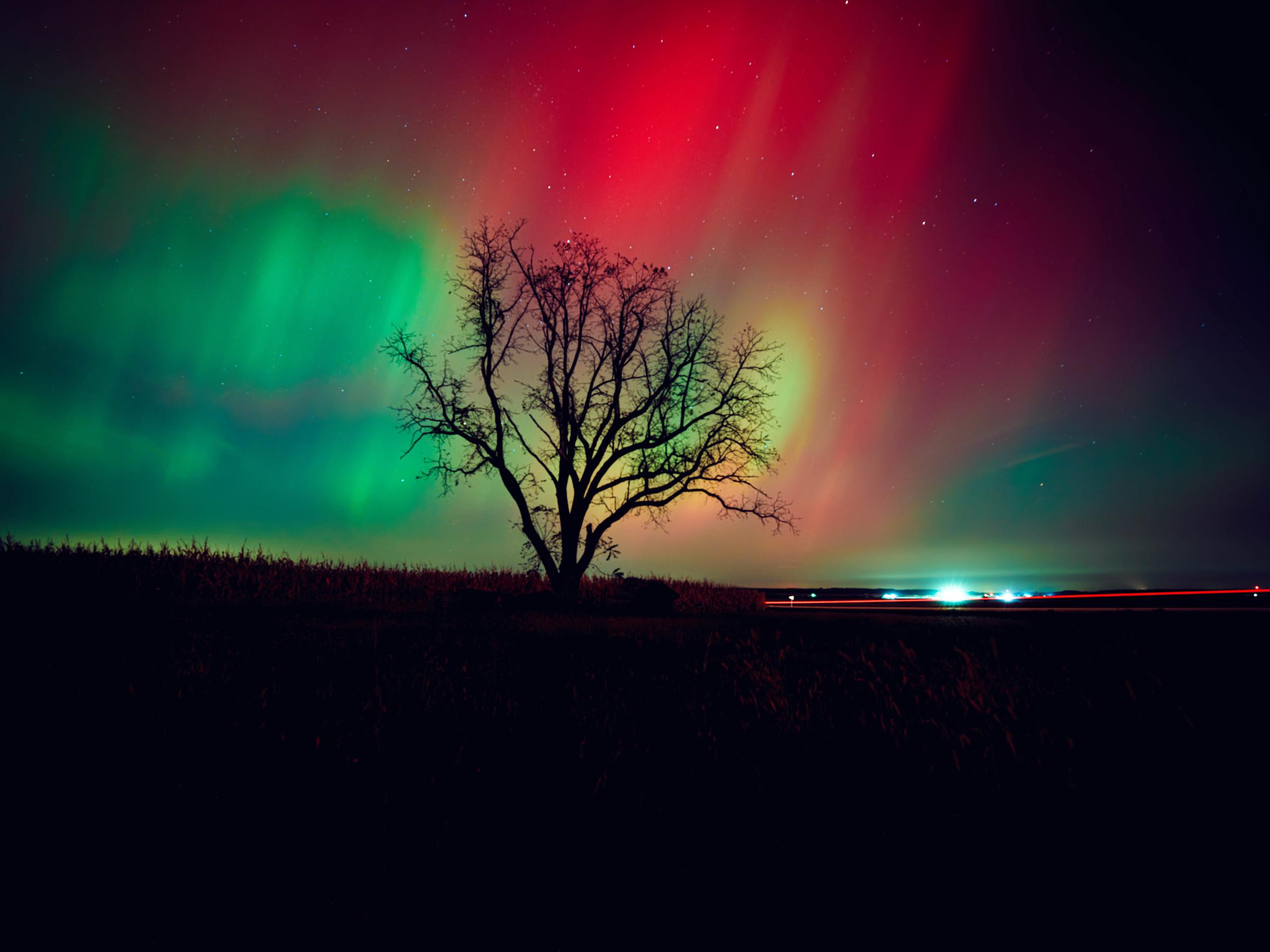
The night sky in Wisconsin glows with the Northern Lights in 2024. | Source: Getty Images
The Northern Lights don’t need to be directly positioned high above in the sky, as the light spectacle can be observed from as far as 1000 km away should the conditions be right and when the aurora is bright enough.
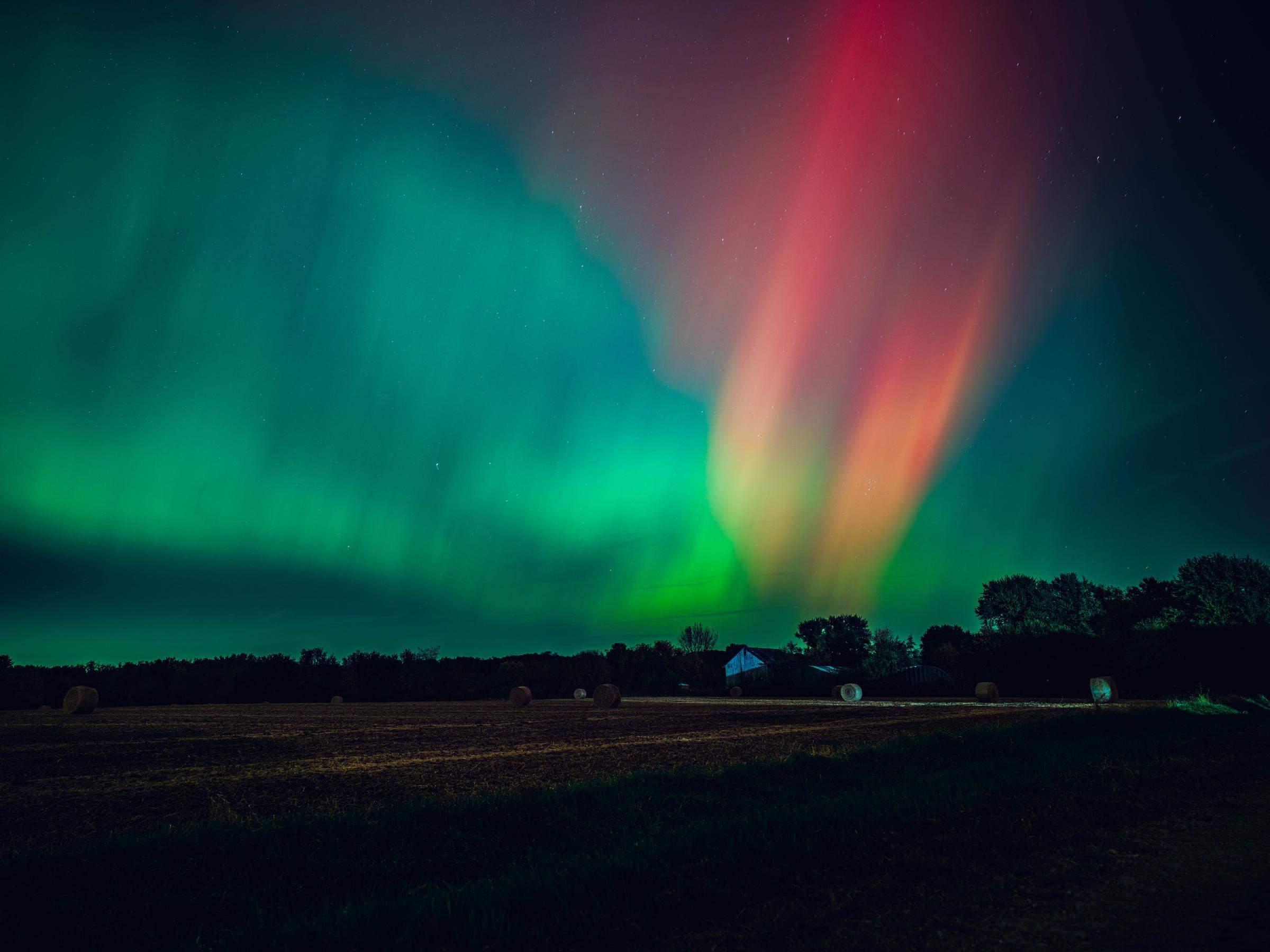
The Northern Lights seen over Wisconsin in 2024. | Source: Getty Images
The prediction center has also provided useful tips for those keen to witness the light event, such as the best-suited environmental conditions for observation.
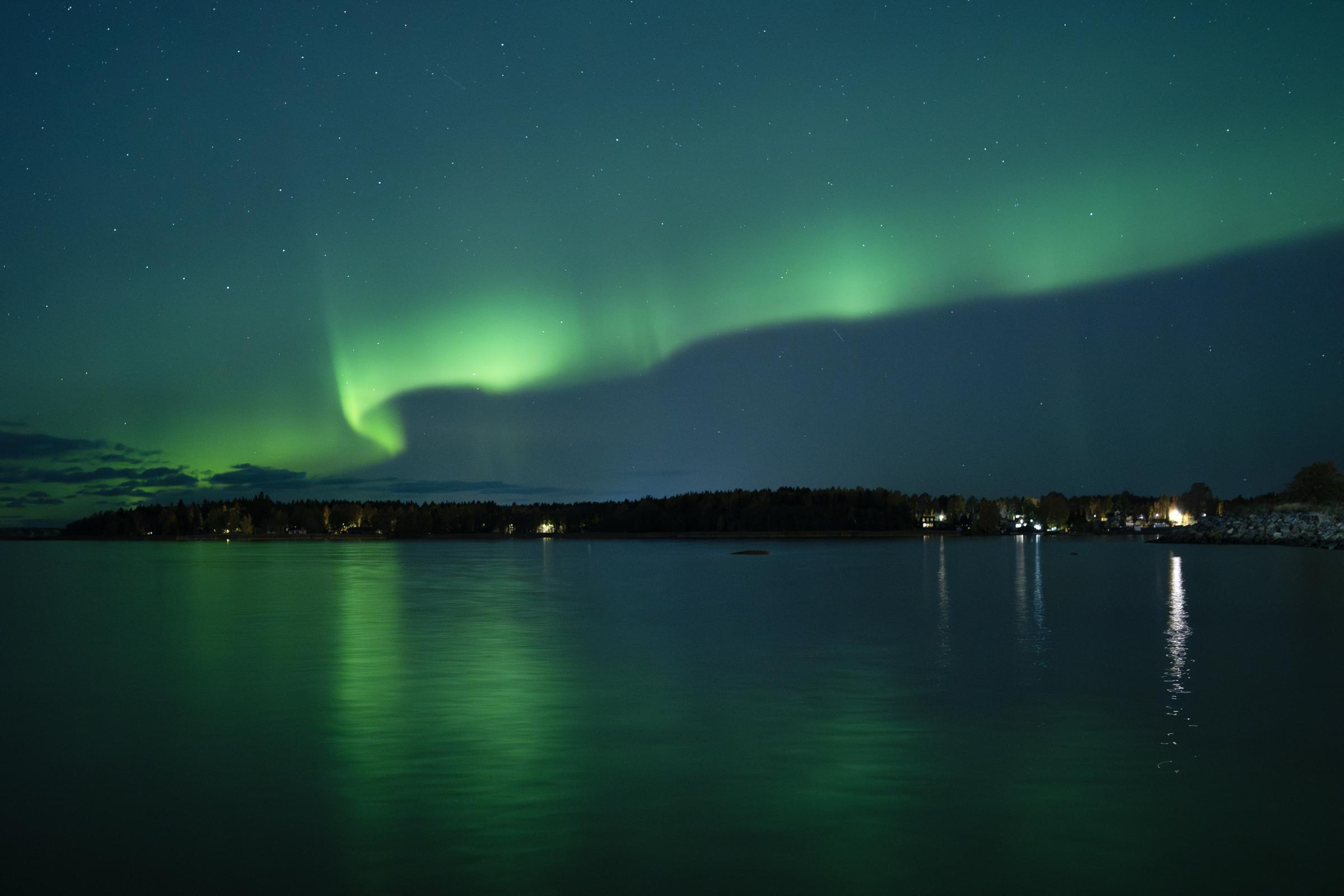
The Northern Lights above North of Vaasa, western Finland on October 11, 2024 | Source: Getty Images
Civilians should go outside at night, and move away from city lights, as the moon tends to diminish the apparent brightness of the aurora, but not its actual radiance.
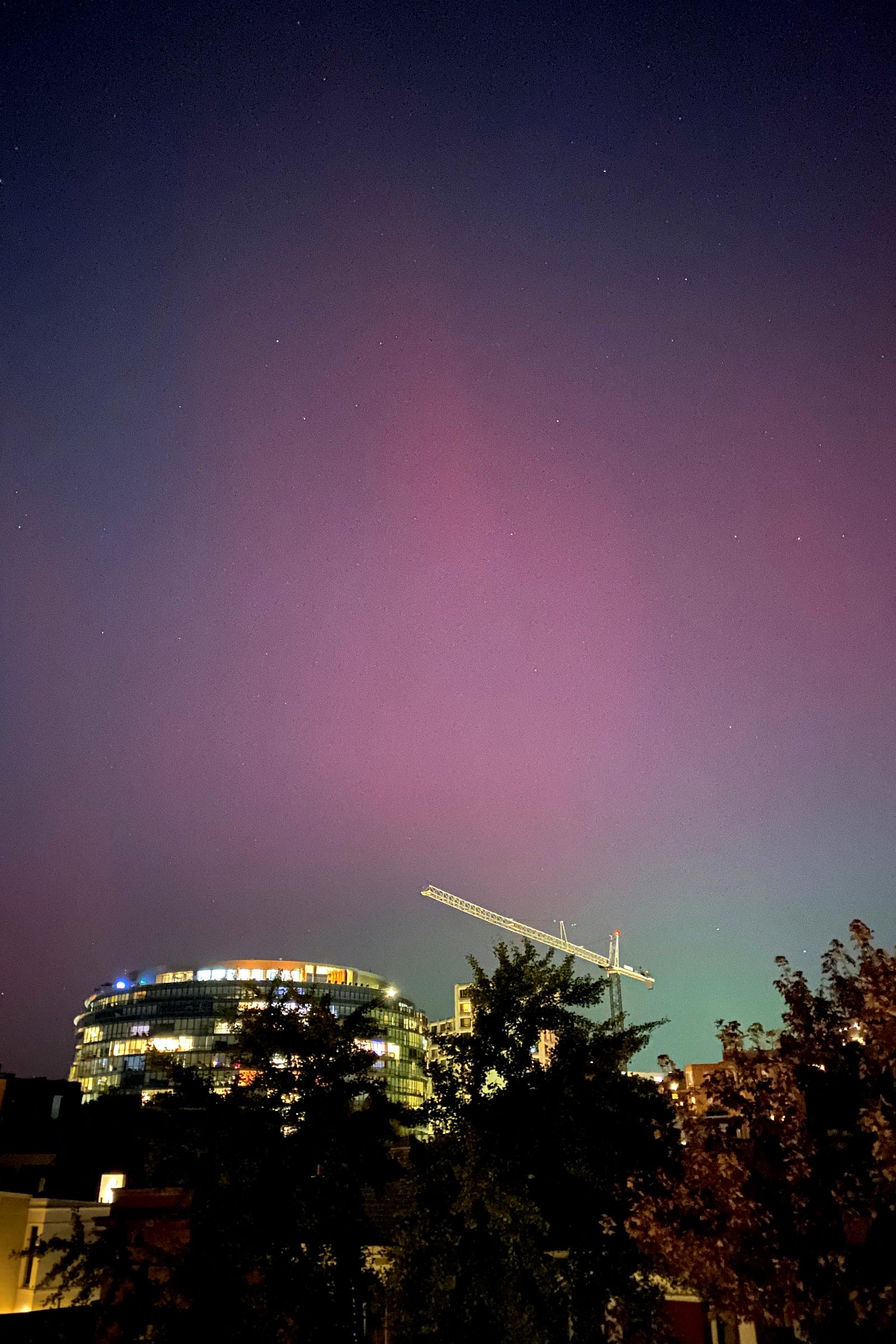
The Northern lights seen over Washington, DC on October 10, 2024 | Source: Getty Images
The center also urges people to remember that the high latitudes where auroras occur are latitudes that don’t get dark in the summer.
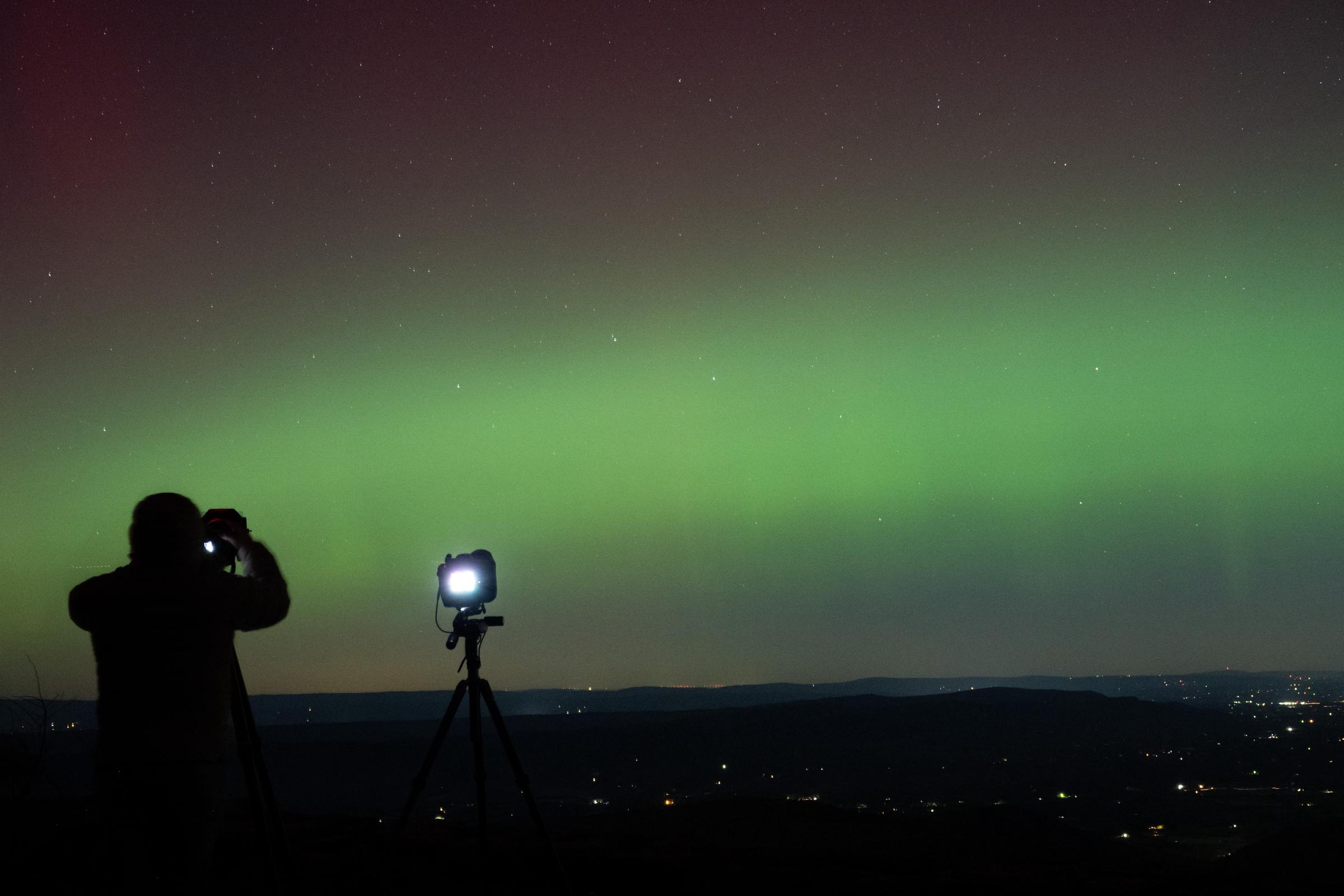
A photographer takes pictures of aurora borealis in Rileyville, Virginia on October 10, 2024 | Source: Getty Images
This means that those looking to combine a summer vacation to the Arctic with the timing of the aurora occurrence will not succeed. This is because, while the aurora may be present, it will only be visible in the dark.
Additionally, the best time to view the aurora is within an hour or two of midnight, between 10 p.m. and 2 a.m. local time, as this is usually the time when geomagnetic activity levels increase.
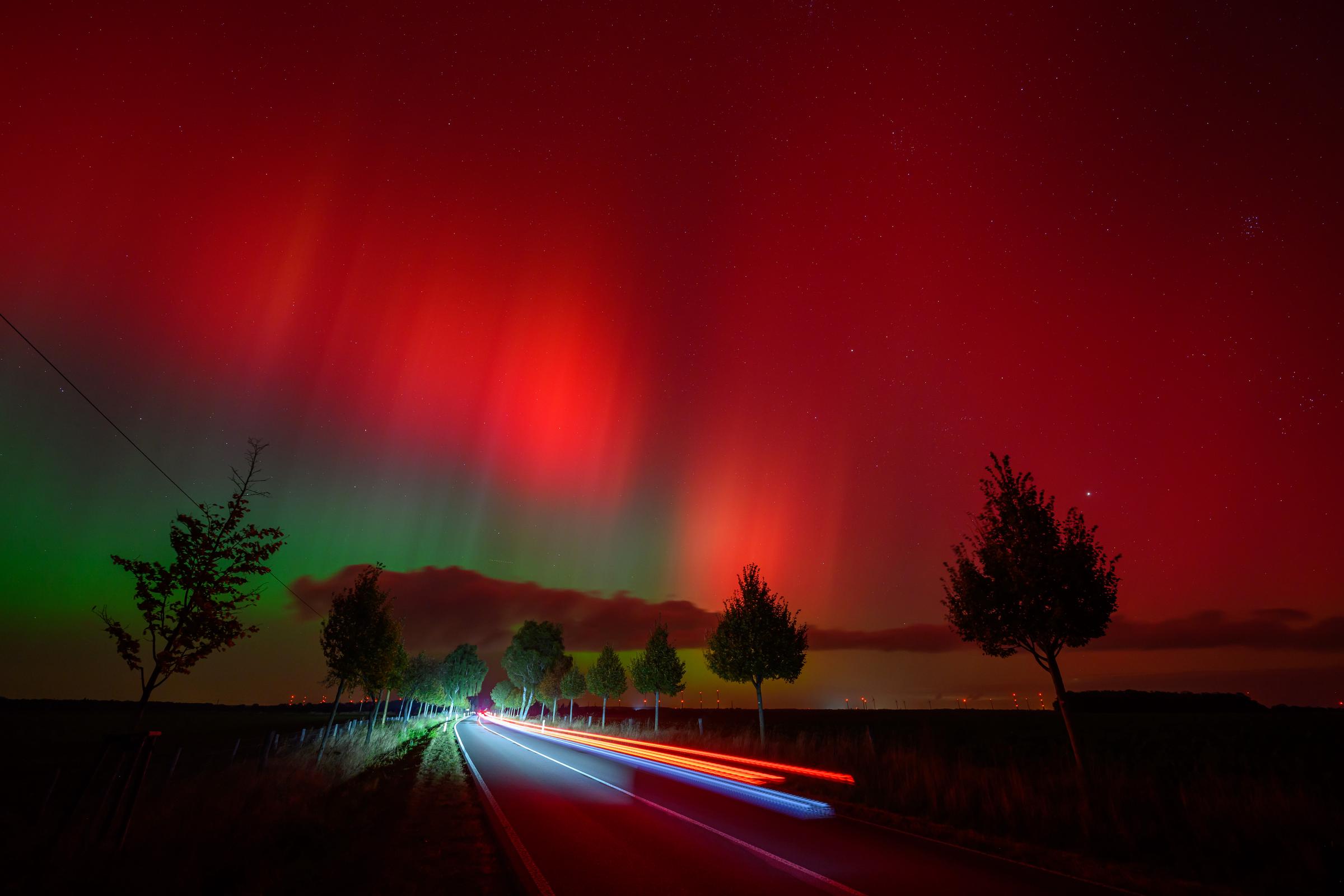
The Northern Lights illuminate the skies in Brandenburg, Lietzen on October 10, 2024 | Source: Getty Images
The best seasons for observation are around springtime and fall equinoxes, due to the existence of subtleties in the way solar wind interacts with the Earth’s magnetosphere.
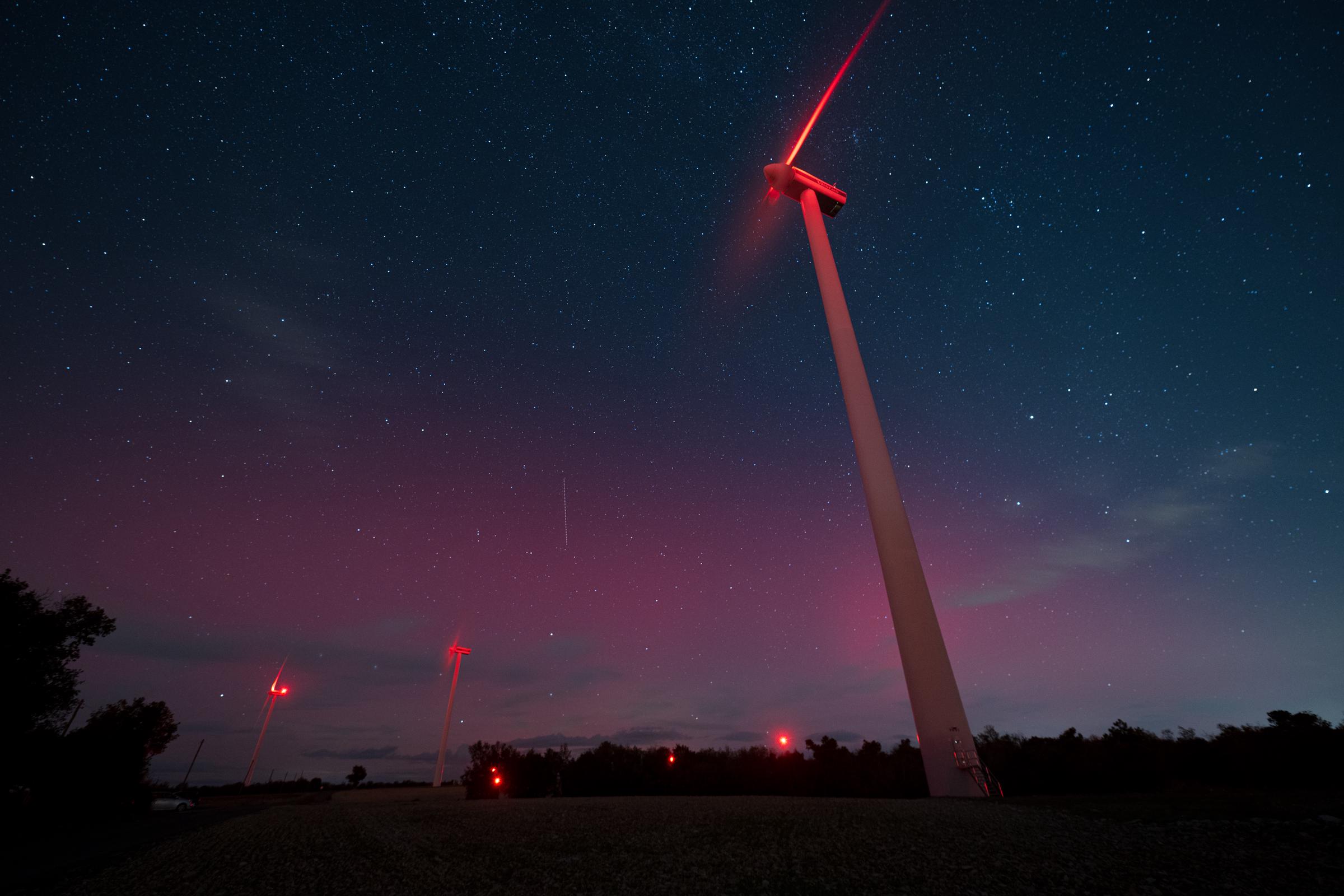
The Northern Lights in Pujalt, Barcelona, Catalonia, Spain on October 11, 2024 | Source: Getty Images
“There is a tendency towards larger geomagnetic storms, and thus better auroras, to occur near the equinoxes,” explains the center.
Continuing, they noted, “However, the number of hours of darkness decreases (increases) rapidly near the spring (fall) equinox so this caveat must be considered for those traveling to see the aurora.”
The upcoming light event is not the first instance that U.S. civilians had the opportunity to witness the Northern Lights, as the spectacle took place last month (October 2024) as well.
After many people had observed the phenomenon on October 10, the Space Weather Prediction Center confirmed that those who may have missed the aurora would have another chance to see it on October 11.
The center tracked the Northern Lights’ activity and predicted a KP index of five for Friday night (October 11). This index, ranging from 0 to 9, indicated the intensity of the aurora.
A KP of 5 indicated a minor geomagnetic storm, which suggested that the Northern Lights may have been visible farther south than usual.
The celestial display isn’t just a visual wonder; it also serves as an indicator of geomagnetic storm conditions, which can impact various technologies, including radio communication and GPS navigation.
The SWPC emphasized the aurora borealis as an exceptional opportunity for many to experience the wonders of space weather, as it is a captivating nighttime display that entices people to journey to Arctic regions to witness its beauty.
At the time, the SWPC also suggested that civilians find a high vantage point, like a hill, to watch the spectacle, as this would enhance the viewing experience.
In addition to the aforementioned states that are expected to be able to witness the event, South Dakota, Iowa, New York, New Hampshire, and Vermont, were states that also had the possibility for viewing, albeit lower.
Other parts of the world had an opportunity to witness the auroras, as the Meteorological Office predicted that although cloudy skies would obstruct visibility across most of the U.K., Scotland was likely to have a clear view.
Last month’s stunning aurora borealis displays weren’t a surprise, because the SWPC had issued a G4 storm watch on October 9, 2024, following a coronal mass ejection from the Sun on October 8th.
This powerful solar event had the potential to cause significant disruptions to crucial infrastructure.
At the time, the SWPC had warned, “There is potential to reach G4 (Severe) upon arrival of this CME and throughout its passage,” and eventually, the storm got stronger than initial predictions.
